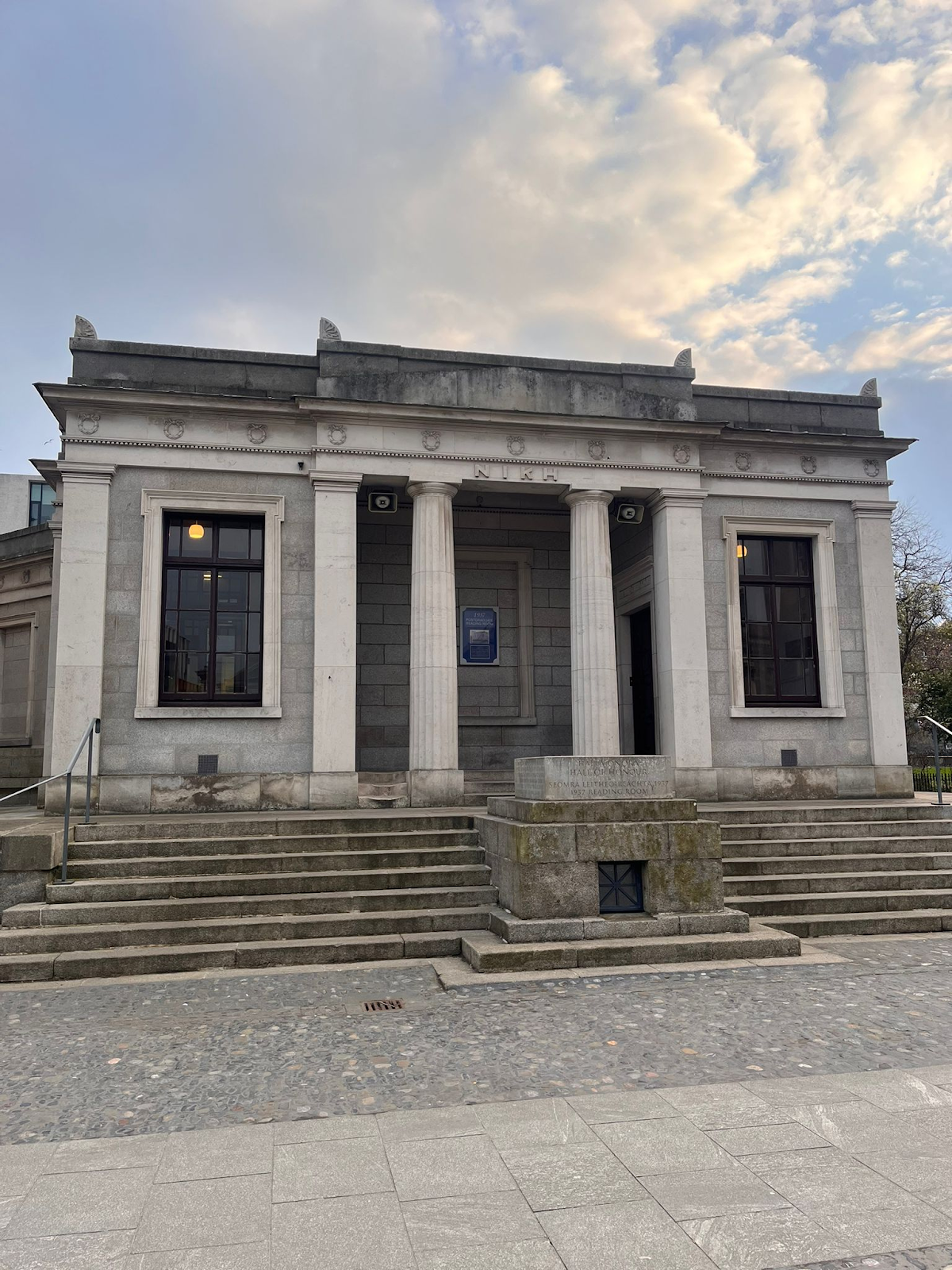Trinity College is home to numerous architectural marvels, each with its own story and charm. Nestled between the Examination Hall and the Old Library, one particular gem often remains unnoticed by the bustling undergraduate crowd. Marked discreetly by the keystone inscription ‘NIKH’ — the Greek goddess of victory, Nike — this masterpiece is known all too well by the postgraduate community. Welcome to the 1937 Postgraduate Reading Room.
“The first time I went in … I was like, ‘Oh this is beautiful!’ It’s quiet, it has plug points, a kitchen and all the facilities that you need when you’re studying. I’ll admit, I’ve taken a few Instagram stories there just to show people the historical vibes.” says Zoha, a postgraduate student.
As the name suggests, the 1937 Postgraduate Reading Room was opened in 1937 but its origins trace back to 1919, when the college sought to honour its community lost to the ravages of the Great War. Sir Thomas Manly Deane, the chief architect, was tasked with designing a space that would serve as both a memorial and a sanctuary for postgraduates. The result was an octagonal masterpiece, spanning four floors, and initially providing 160 seats in the main area. The ‘Hall of Honour,’ serving as a solemn prelude to the building, is etched in gold with the names of 471 valiant Trinity students who served, immortalised in Kilkenny marble.
Besides its scholarly purpose, the 1937 Postgraduate Reading Room has also brought Trinity to Hollywood, serving as the filming location for a scene in the iconic film, “Michael Collins”. Directed by Academy Award-winning Neil Jordan, the movie is a historical biopic of the Irish revolutionary leader who fought to liberate Ireland from British rule in the early 20th century. The film’s pivotal Dáil Treaty debate scene was filmed in the Reading Room, linking the room to a key historical narrative of Ireland’s past.
Moving beyond its historic and cultural significance, the 1937 Postgraduate Reading Room continues to be an essential part of academic life at Trinity today. Postgraduate student Denis Hristev appreciates the convenience it offers, stating, “I love that I don’t need to book a space to work in the Reading Room. It’s also open 24/7, unlike some of the other libraries and spaces across Trinity, ensuring I won’t be unexpectedly asked to leave.”
“The entire atmosphere is unique—everyone is there with a purpose”
Another student, Cameron Patterson, highlighted the calm and serene environment that fosters intense focus and productivity: “It’s so quiet there, and everyone maintains a whisper-like silence. The entire atmosphere is unique—everyone is there with a purpose, making it more of an individual workspace compared to other places on campus.”
Enthusiastically, postgraduate student Zeynep Bilgi added, “Being in the reading room makes me feel young again! Being elsewhere on campus, surrounded by undergraduates, can make me feel so old sometimes!” Her comment emphasises the importance of having a space dedicated to postgraduates, creating a sense of community and belonging.
Willian Ribeiro, a dedicated postgraduate from the business school, frequents the Reading Room almost every day. Speaking with Trinity News he said: “I’m drawn to the postgraduate reading room because it’s incredibly motivating for me to focus on my work here. Because I don’t live with students, I find it hard to get any studying done at home. However, in the reading room, I’ve found my people, students from different programmes and it’s fun to share different study methods. Also, the fact that the building is so beautiful definitely helps!”
While Willian and many others found sanctuary within the walls of the 1937 Postgraduate Reading Room, it’s important to acknowledge that the space is not without its challenges. Before the recent shutdown of the Graduate Students’ Union (GSU), a variety of concerns were raised by postgraduate students. These ranged from insufficient space to work and patchy Wifi, to a shortage of power outlets. Before she was elected in 2021, Provost Linda Doyle promised to improve postgraduate student life by highlighting in her manifesto: “I will invest in and upgrade the 1937 Postgraduate Reading Room.”
“Bathrooms are not only afflicted by a foul odour but also suffer from black mould”
Despite this promise, challenges remain within the Reading Room. Student reports revealed that the bathrooms are not only afflicted by a foul odour but also suffer from black mould. Additionally, the implementation of unisex bathrooms has sparked discomfort among some individuals. The closure of the kitchen this semester has further inconvenienced students, hindering their ability to warm meals or refill water bottles, thus forcing them to leave the building for such basic necessities.
The 1937 Postgraduate Reading Room stands as a testament to Trinity’s rich history and has helped put the college on the map with its cultural significance. While it serves as a sanctuary for postgraduate students, fostering a sense of community through its exclusivity, it is clear that there is room for improvement.
Although the GSU is currently dissolved, the need to heed the voices of postgraduate students is still crucial. Their insights are essential in ensuring the Reading Room continues to meet the evolving needs of its users. Addressing these concerns will not only preserve the room’s legacy but also enhance its role as an essential nexus for postgraduate study.






